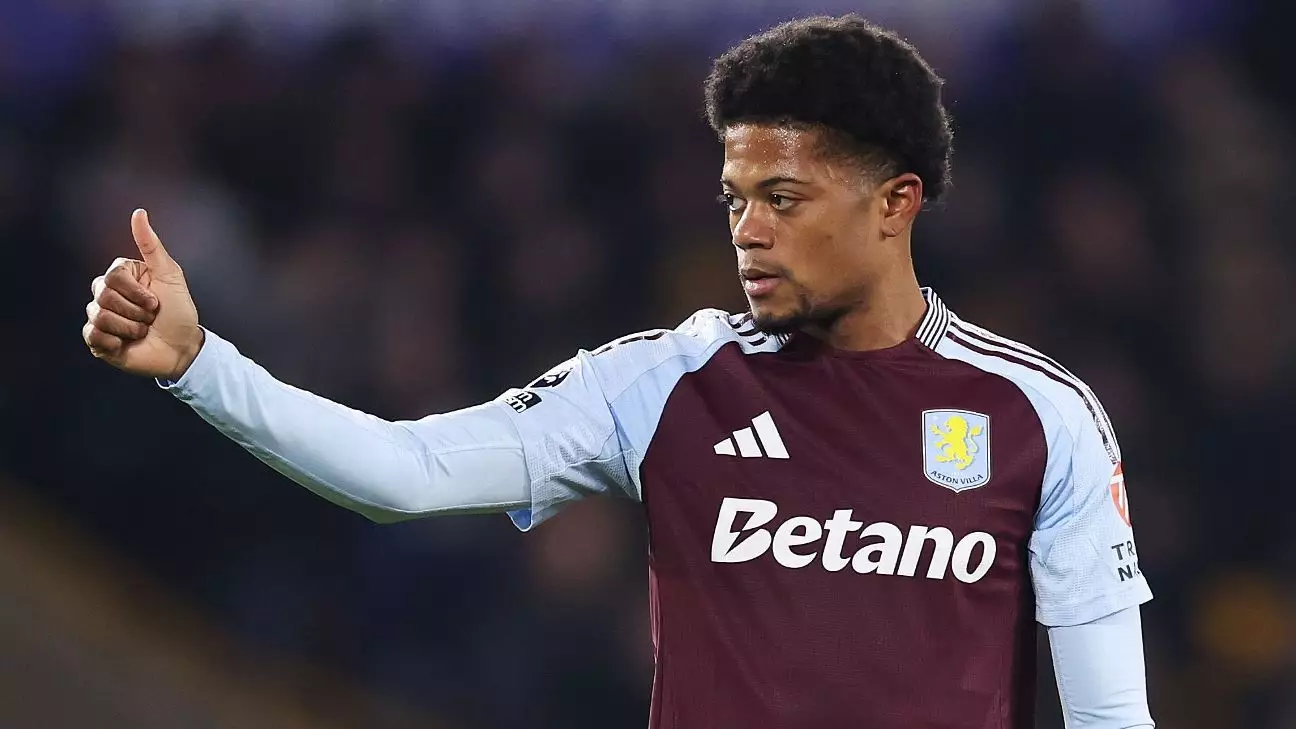As the clock ticks down on the current transfer window, Manchester United finds themselves in a pressing situation, eager for reinforcements following a disappointing home defeat that has left fans and analysts alike speculating about the direction of the club. With notable names such as Aston Villa’s Leon Bailey coming into the frame, the Red Devils’ transfer strategies are under scrutiny as they attempt to navigate a competitive market to bolster their squad.
Manchester United’s recent performance woes can be traced to various factors, including injuries, lack of form in key players, and perhaps most significantly, tactical inconsistencies. The defeat on Sunday further intensified calls for urgent transfer activity, as supporters question whether the existing squad can compete effectively both domestically and in European competitions. While players like Marcus Rashford have taken temporary exits, with his move to Aston Villa on loan, the focus shifts squarely onto who can be brought in to revitalise a faltering campaign.
The arrival of new players, such as Patrick Dorgu and Ayden Heaven, hints at a strategic pivot; however, with reported complications surrounding the acquisition of Mathys Tel from Bayern Munich, the need for additional options becomes evident. Leon Bailey, despite his underwhelming statistics this season—with only one goal and three assists across numerous appearances—has emerged as a potential target. His previous experience in the Premier League could provide the squad with much-needed versatility and pace.
Bailey’s performance record, especially his current form at Aston Villa, raises questions about whether he is the solution to United’s attacking woes. Though he possesses undeniable talent, the inconsistency shown this season has not gone unnoticed. Supporters might ponder if investing in a player who has struggled to find his rhythm is a gamble worth taking. Yet, Bailey’s explosive speed and capability to stretch defences could offer an alternative dynamic, something United may desperately require.
Critically, the discussion surrounding Bailey’s transfer also spurs a broader dialogue about Manchester United’s scouting and recruitment strategies. Are they pursuing players based on potential and versatility, or are they choosing short-term fixes? The club’s historical reputation for nurturing flair and confidence in players contrasts sharply against recent patterns that seem to prioritize filling immediate gaps without long-term planning.
Additionally, the landscape of potential signings is crowded, with Chelsea’s Christopher Nkunku also appearing on United’s radar. Both players represent alternatives to stem the flow of disappointing performances, yet it is evident that a well-thought-out approach toward recruitment is crucial. The need for strengthening the left-back position also echoes within the ongoing discussions about players like Ben Chilwell, who may provide much-needed depth if secured.
In a parallel vein, clubs like Tottenham Hotspur seem to be aggressively pursuing new signings, illustrating the pervasive urgency among squads to reinforce ahead of crucial matches. The transfer market is not only a battleground for the acquisition of talent but also an arena where strategic foresight and adaptability are tested. As teams scramble to fortify their ranks, Manchester United finds itself at a critical juncture where both short-term solutions and long-term vision must intertwine.
Ultimately, while the immediate focus rests on the current transfer window’s possibilities, one must look further at Manchester United’s broader objectives. The club’s long-term aspirations should involve rebuilding trust with supporters, carving out a coherent identity on the field, and nurturing talents who can contribute reliably over time. The handling of the transfer window may reflect deeper structural challenges within the club’s approach to teamwork, management, and player development.
The pressure on the Manchester United hierarchy to act decisively in this transfer window is palpable. While players like Leon Bailey may offer tactical advantages, the real question lies in whether such moves are part of a grander vision. The integration of new faces must serve a dual purpose: alleviating current strains on performance while also building a foundation for a more formidable side capable of challenging for silverware. As the clock winds down, the decisions made now could reverberate through the season and beyond.

Leave a Reply